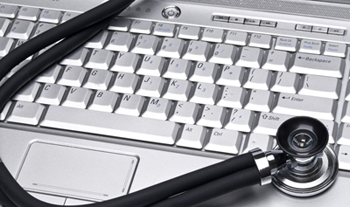 Medical documentation is a major consideration for healthcare providers from the point of view of appropriate patient care as well as reimbursement for provided services. With the implementation of EHR, it is a common belief that medical transcription is on its way out. But in reality, transcription is still an integral part of clinical documentation and workflow. A combination of transcription and EHR works best to capture the patient narrative accurately. The role played by medical transcriptionists and medical transcription companies has changed considerably, bringing a new significance to the transcription process.
Medical documentation is a major consideration for healthcare providers from the point of view of appropriate patient care as well as reimbursement for provided services. With the implementation of EHR, it is a common belief that medical transcription is on its way out. But in reality, transcription is still an integral part of clinical documentation and workflow. A combination of transcription and EHR works best to capture the patient narrative accurately. The role played by medical transcriptionists and medical transcription companies has changed considerably, bringing a new significance to the transcription process.
Capturing a Detailed Patient Narrative with Medical Transcription
With EHR, many physicians find the checkbox or template method insufficient and inefficient to capture a comprehensive patient narrative. In the case of EHR, physicians either enter the patient details directly into the EHR or dictate using microphone and then edit and enter into the EHR. The drawbacks of this process are:
- Decline in physician productivity
- Limitations of templates and checkboxes
- Lack of quality checks and editing
The solution to this problem is the use of transcription while documenting EHR. With voice recognition integrated EHR, physicians can dictate and the physician’s notes are then sent to the transcription department for editing and later entered correctly into the EHR. Another alternative is outsourcing medical transcription – physicians dictate and the audio files are outsourced to a medical transcription company. Professional transcriptionists transcribe the audio files accurately and then enter the required details into the provider’s EHR via HL7 interface.
Deciding on which method to adopt solely depends on the needs of healthcare units and clinics. Both manual transcription and automated transcription have their own advantages and disadvantages.
Advantages of Manual Transcription
- Qualified and trained transcriptionists who provide the transcription are extremely skilled in typing and reviewing the medical record. They understand what the dictator is saying and can make the necessary modifications in case there is some confusion. They provide polished and refined patient data.
- Errors are eliminated and a high level of accuracy is ensured.
Disadvantages
- Transcription costs may vary according to the length of the audio, turnaround time, verbatim or non-verbatim and so on.
- It may take some time to decide on the most suitable provider.
Advantages of Automated Transcription
Automated transcription involves the use of speech recognition software that helps transcribe the dictated notes. Advantages you can expect include:
- Possible cost savings
- Best for people who prefer to do transcription by themselves
Disadvantages of Automated Transcription
- Accuracy and quality cannot be expected up to the mark. Mistakes are very likely when the transcription of the audio is entrusted entirely to the software tools.
- The challenge is more when there are different speakers, varying accents, background noise, quick dictation, mumbling and so on.
- Requires high level quality checking with editors and proofreaders as this method is more error prone.
- Ultimately more time, costs and resources are used up to ensure a good and flawless final transcript.
Software used for speech recognition and transcription tends to fumble with similar sounding words since it cannot understand the difference between 2 homophones such as “no” and “know”, or “male” and “mail”. Another issue the software faces is when there are multiple speakers, each with a different accent. Audio quality must also be excellent if you are to ensure an accurate transcript.
If automated transcription is to become flawless, the software has to evolve considerably. Manual transcription involves human intelligence and that makes all the difference. In this EHR era, medical transcription companies are making a real effort to fit into the new role expected of them ensuring that clients have the advantage of both EHR and traditional dictation – transcription.


